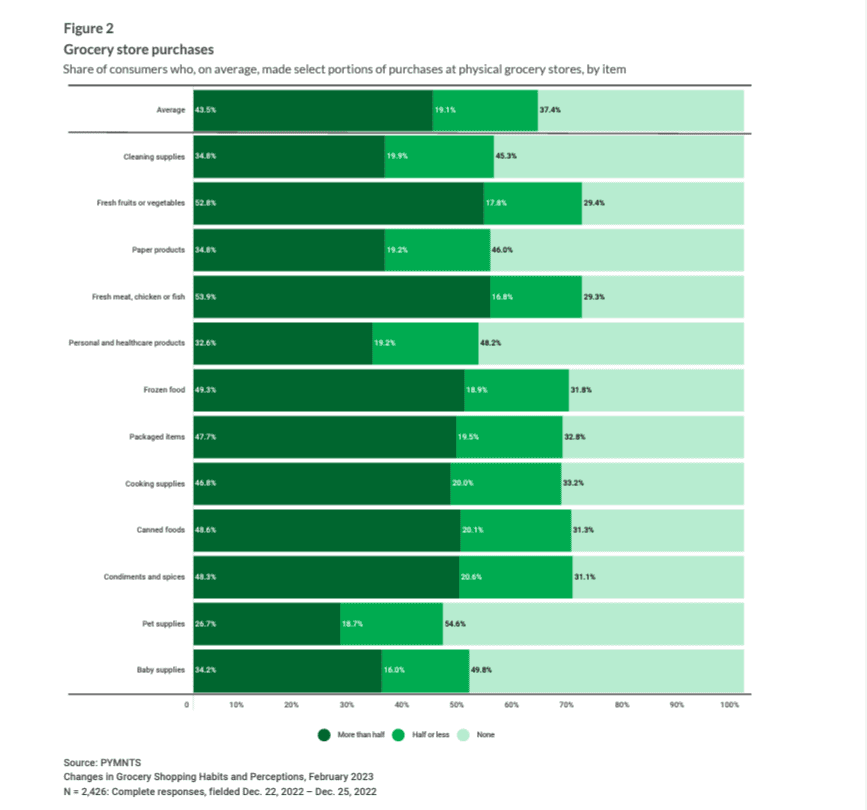Grocery Shelf Space Fight May Not Be Worth It For Pet Brands
Traditionally, nabbing a slice of shelf space was invaluable for any brand hoping to gain recognition and market share. However, that may no longer be the case as over half of consumers have abandoned buying pet products in-store and instead embraced the convenience of eCommerce channels.
The PYMNTS’ Grocery Sentiment Survey compares what share of selected grocery store items were bought in-store or online, both pre-pandemic and after.

Most notably, for pet products, over half of the consumers’ purchases were online. For new or other brands trying to gain market share, establishing a digital-only presence may make sense, at least as a near-term strategy. After all, if these sorts of choices must be made, it makes sense to go where 55% of a sector’s customers are shopping. On the internet, there’s no sharing shelf space with often-cheaper grocery private labels. And consumers, in general, love shopping online.
Some brands considering a digital-only approach may think about going direct to consumer (D2C). With sales reflecting the friction-free checkout customers appreciate, surveyed consumers only cited checkout frustrations with 11% of D2C transactions, compared to 13% from a merchant’s app or website, 16% from a digital marketplace and 38% from a social media platform’s marketplace.
However, not every market leader finds strict D2C to be the best course of growth for companies. In an interview with PYMNTS, Joey Zwillinger, co-founder and co-CEO of D2C footwear brand Allbirds, explained why the brand also has a brick-and-mortar presence. “Brands need to give new customers who might be on the fence about buying their products an opportunity to feel and test out the product. Being purely D2C can hinder long-term potential because reach is limited. Brands must meet consumers where they are. At Allbirds, we’ve held an omnichannel vision for the company ever since we started.”
Feeling and testing out a product may be less relevant for pet brands, but Zwillinger’s point about meeting customers where they are is important for all retail sectors. Heeding that advice, brands may consider trying to get on an eCommerce site such as Chewy.com, where competition for virtual shelf space may be less competitive than in-store. And as the company noted in its company’s Q3 earnings call, business is booming. Chewy saw 14.5% year-over-year growth in net sales during the quarter, mostly driven by essentials such as food. In a time when consumers are cutting back on discretionary items, people overall clearly still treat their pets like family members.
Adapting to shoppers’ changing behavior and demands is part of the retail business. For some pet brands or other household items, going where the consumer is may mean shunning traditional grocery shelves.